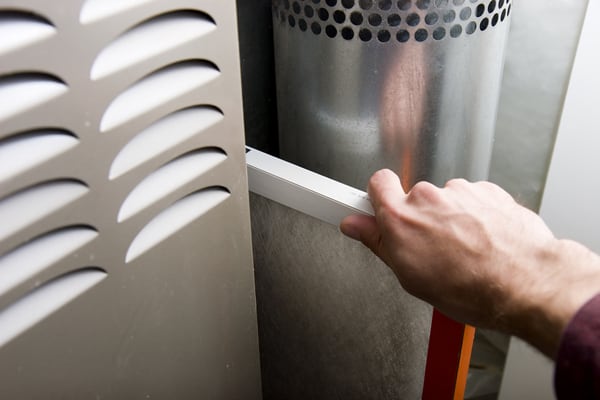Seven common ways you’re wasting money in your home include: neglecting refrigerator maintenance, such as cleaning the condenser coils and replacing a worn gasket; not regularly clearing lint from your dryer, both at the filter and venting tube; overusing space heaters, which can drive up electricity bills; setting your water heater too high; inefficient use of the dishwasher and not air-drying dishes; failing to replace your furnace’s air filter regularly; and underutilizing your microwave oven’s energy efficiency for cooking. Paying attention to appliance maintenance and efficiency can significantly reduce these unnecessary costs.
1. Your refrigerator
As the new Maytag® advertising jokes, the refrigerator is one hard-working kitchen appliance. It removes heat to reach a set temperature to keep your food fresh – all with very little maintenance work by you.
If you’re skipping refrigerator maintenance…
you’re making your refrigerator work too hard – and wasting energy and money.
Refrigerators use condenser coils (the large, black coils at the back or beneath the unit) to remove heat. Dirty condenser coils cause refrigerators to work overtime, which raises your monthly bill and may lead to premature failure of the refrigerator. You should clean off the coils every few months. Fortunately, it’s easy. Just use a long-handled bristle brush to gently remove dust and dirt from the coils.
A worn or damaged refrigerator gasket (rubber seal around the door that keeps cool air inside and warm air out) also forces a refrigerator to work harder to remove heat. Make a habit of checking the gasket periodically for cracks and tears; replace it as needed. Gasket replacement is simple and inexpensive.
2. Your dryer
Lint buildup prevents proper air flow, often leading to premature component failure and increased drying times, costing you more money. Lint buildup + heat = instant fire. It results in thousands of fires in the U.S. and Canada every year. Lint removal is critical to safety.
Three-step lint removal maintenance:
- Clean the lint filter (a.k.a. lint trap).
Lint must be removed from the lint filter after every load. Yes, every load. Also, once per month, clean the filter with warm water, detergent and a small bristle brush such as a toothbrush. Replace if there any tears. Also, once per season, use a long-handle brush or vacuum attachment to remove lint from the filter’s chute. Yes, lint settles there, too.
- Clean out the dryer interior.
Even with diligent filter cleaning, lint builds up inside of the dryer. Once or twice per year, disassemble your dryer. Look for a how-to-disassemble video for your model in our free Repair Help. Use a vacuum and attachment to remove the lint.
- Clear the dryer venting tube.
Your dryer’s entire venting system should be cleaned out from the inside of the dryer to the outside vent cap at least once per year. It’s usually a simple do-it-yourself job. Our bestselling 20-foot (six-meter) cleaning brush enables you to easily remove lint buildup from within the entire tube from the back of the dryer to the outside of your home. Also, periodically inspect the area around the dryer’s vent cap outside. Remove restrictions such as snow or leaves and clear shrubbery to enable proper air flow.
3. Your space heater.
While space heaters may enable you to reduce your furnace’s thermostat temperature by a few degrees, they may use more electricity than you’d expect. We’ve heard horror stories about tripled monthly energy bills after space heaters were added to drafty rooms. Remember that space heaters work best in walled rooms; a space heater may be ineffective in a room that’s part of an open floor plan. There’s a safety factor to consider with space heaters, too. Due to their compact size, they are vulnerable to tipping over. Some newer models have an automatic shut-off feature when tipped. Due to a fire risk, space heaters should be positioned at least three feet (approximately one meter) from curtains, rugs and furniture.
4. Your water heater.
Every water heater has an adjustable temperature setting. Most people keep water heaters at a much higher setting than is necessary for their needs. This means they are wasting energy keeping water exceptionally hot for most of every day – while they are sleeping, at work, etcetera. A setting of 120 degrees Fahrenheit (48 degrees Celsius) is generally sufficient and safe for most households. Set the water heater to its vacation setting if you plan to be away from your home for more than a few days.
5. Your dishwasher.
Run your dishwasher only when it’s full but take care not to overload it so that you don’t have to re-wash the dishes. Opt for air-drying, in lieu of the heated-dry feature. Skip the pre-rinsing of dishes (unless the dirty dishes have been left out overnight).
6. Your furnace.
Always have a clean air filter in place. A dirty air filter will cause your furnace’s fan and motor to work harder, increasing energy usage. Also, by restricting air flow, it will eventually lead to component failure and expensive repairs. Replace it at least every six months. Inspect its condition every month.
7. Your range.
A microwave oven uses less energy to heat food than it does in an oven or on a stove. Consider using your microwave oven for more than just popcorn and frozen dinners. Be sure to use your microwave oven’s preset cooking times feature; this provides for greater energy efficiency and more precise cooking.
A plug-in energy usage meter can help monitor changes in energy consumption by appliances and help you determine if older appliances should be replaced.
Pay attention to your appliances, heating and cooling equipment and outdoor power equipment. Take note of changes in appliance and equipment performance such increased time needed to complete the work. Replacing worn or damaged parts goes a long way in extending the life of appliances.


Comments are closed.